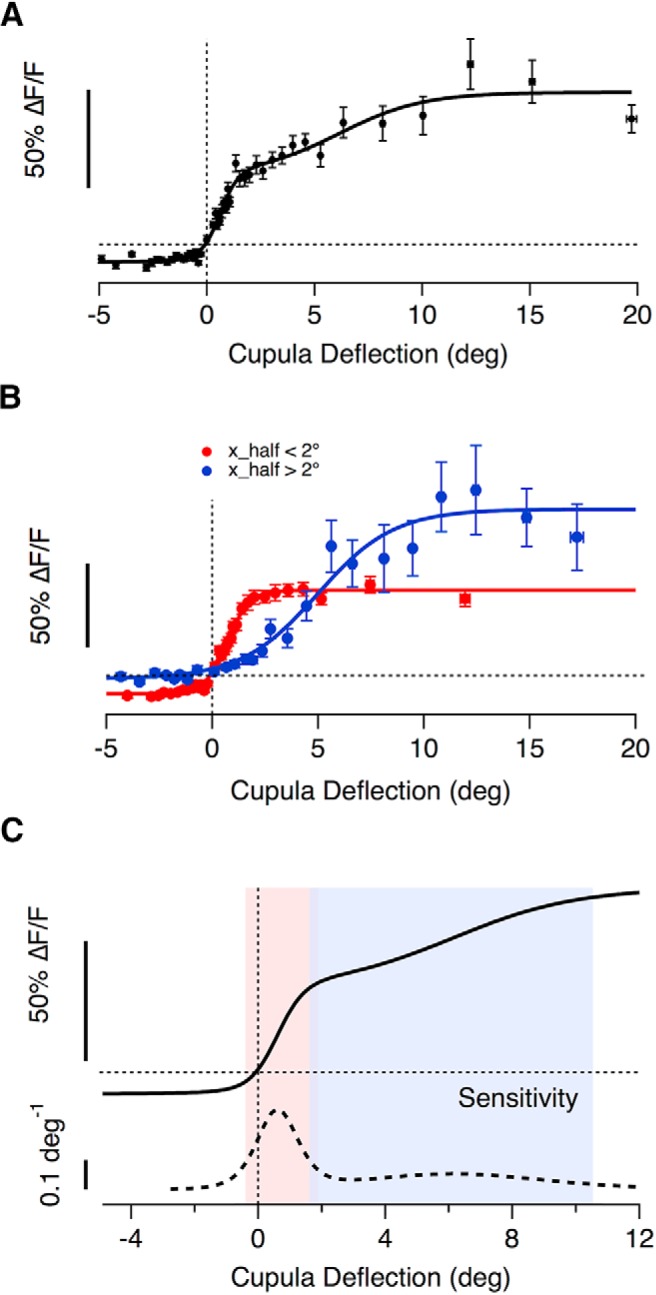Figure 6.

The average transfer characteristics of hair cells in a neuromast. A, The binned averages of 2800 individual paired measurements of cupula deflection and peak glutamate release, recorded from 67 hair cells using the iGluSnFR probe. All responses are plotted as a function of the magnitude of deflection, regardless of direction. A good empirical description was provided by the sum of two Boltzmann relations (Eq. 3) as shown by the fitted curve (Rmin = 0.1 ± 0.02, Rmax(1) = 0.44 ± 0.09, Rmax(2) = 0.42 ± 0.12, X1/2(1) = 0.60 ± 0.1°, X1/2(2) = 6.14 ± 1.17°, Xs(1) = 0.42 ± 0.12, Xs(2) = 1.95 ± 0.95). The WR of the whole population is 8.9°. B, The average stimulus–response relation of hair cells separated into two groups based on half-angle with a threshold of 2°. The two subsets had average half-angles of 0.7° (red, n = 50 hair cells) and 5° (blue, n = 17 hair cells). The high- and low-sensitvity groups of hair cells also differed significantly in Rmin, the maximum change in the null direction, with values of −0.11 ± 0.01 and −0.02 ± 0.02, respectively. The working rages of these populations were 2.3° and 8° respectively and overlapped between 1° and 1.9°. C, The sensitivity of the whole population calculated as the derivative of the fit in A. Small deflections (<2°) are encoded with high sensitivity by the large population of hair cells whereas the second smaller population extends the dynamic range significantly to also capture larger cupula deflections, ranging beyond 10°.
